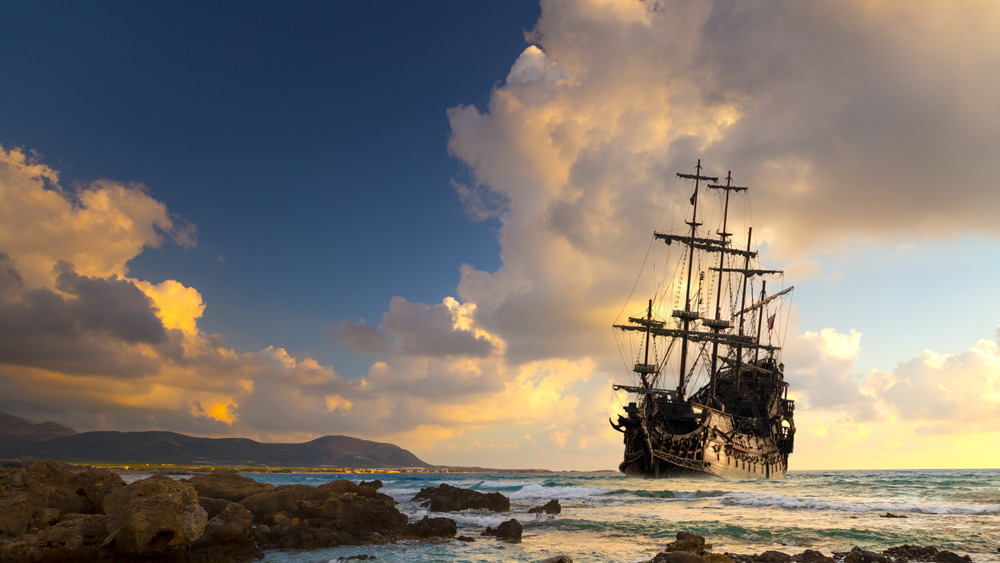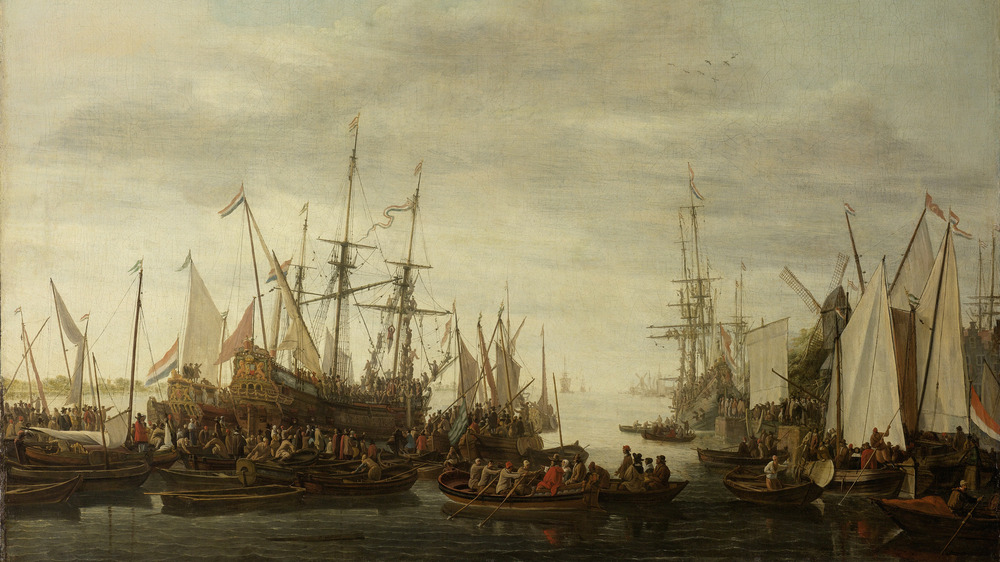The Maritime Torture Worse Than Walking The Plank
"What shall we do with a drunken sailor?" "Way hey and up she rises!"
Anyone who's sung, clapped, and tapped along to this tried-and-true sea shanty, listenable on YouTube, might get the wrong impression about how jolly and frolicking maritime life used to be. That is, until you get to the whole rusted-razor-shaving part. Oh yeah, and the torture. But this merry romp of an oceanic ditty, full of frat-boy pranks, stops short of describing such agony, which combines the best parts of waterboarding, rusted razor shaving, and literal salt in wounds (ocean water, right?) into full-body, submerged torment that will leave you wishing you'd walked the plank. And also scouring the seas for lost fingers, eyes, lips, genitals, or anything else easily shredded from your spongy, squishy meatframe.
We're talking about keelhauling, a type of maritime torture that you might not know about because it's too horrid for anyone to bring up in polite conversation. Officially discontinued as a state-sanctioned torture technique of the Royal Navy in 1720, and the Dutch in 1750, there are reports of its use as late as 1882, per All That's Interesting. After all, in the middle of the ocean (or under the water), what authorities can hear you scream?
The purpose of keelhauling, like all torture, wasn't to kill, but to cause pain. And of course, to send a message to any other would-be disobedient sailors: namely, your employer is just the absolute worst.
Dragged across the barnacles of a ship's keel
The painting The Keelhauling of the Ship's Surgeon of Admiral Jan van Nes by Lieve Pietersz (above; dated 1660-1686), provides an early record of keelhauling. Basically, the offender was "dragged beneath the ship's keel on a rope," the "keel" being the barnacle-encrusted underside of a ship. Offenders were lowered into the water and raked across the barnacles, which we remind you, are stone-hard, claw-like clusters of calcium deposits, as the National Ocean Service explains. They're living crustaceans, like mussels or clams.
A Universal Dictionary of the Marine, published in 1769 by William Falconer, describes strapping lead or iron to a "delinquent's" extremities, plunging them in the water, and dragging them back and forth multiple times. As Falconer relates (readable on Project Gutenberg), "As this extraordinary sentence is executed with a serenity of temper peculiar to the Dutch, the culprit is allowed sufficient intervals to recover the sense of pain, of which indeed he is frequently deprived during the operation." Humblebragging much, William? Simply being lowered in frigid ocean water and being forced to hold your breath while needing to scream from agony – bloody barnacle lacerations notwithstanding — is absurd enough of a method of torture to warrant the question: What is wrong with humans, anyway?
Pirates keelhauled, too, of course, as the Way of the Pirates explains. Sometimes folks were dragged slowly, to prolong the pain, and sometimes oil-soaked sponges were put in victims' mouths to grant them one additional breath.

